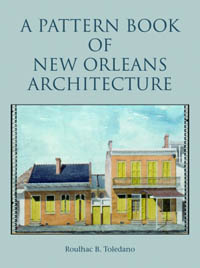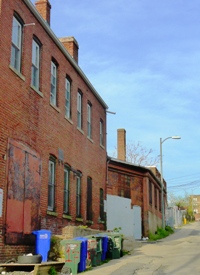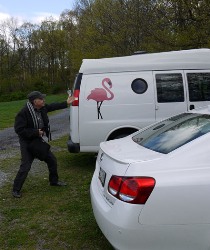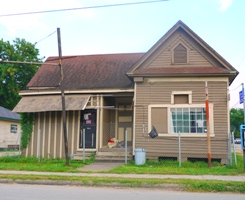The LOADING DOCK in Front of This House is NOT just any “Parking Space”…Washington, D.C.
The LOADING DOCK in Front of This House is NOT just any “Parking Space”…Washington, D.C.
A Comment on Public Space in the District of Columbia

In the 1300 block of Euclid Street, NW, Columbia Heights, this house represents a foul attempt at convenience that often fronts multi-unit dwellings in Washington, D.C., and completely obliterates the unity of the terraced yards in this residential block.
One of the most misunderstood laws in the District of Columbia is regarding the public space that comprises the front and side yards of our houses. In the last years of the 19th century, Congress passed a law to preserve ”green space” adjacent to private property in our fair City of Washington, D.C. If you think of nearby cities, such as Baltimore, New York or old Philadelphia, on a whole, the residential buildings of each place are closer to the street, few having yards or any real green space at all. Yet, in Washington, L’Enfant’s plan calls(ed) for wide avenues, vistas, medians, monuments, and green space galore to intensify his concept of (French) grandeur. Therefore, many of the houses built in the late 19th century and through the first half of the 20th century, are recessed from the street, even when in urban, dense forms and styles. These laws evolved through the first decade of the 20th century so that houses built prior to abt. 1900 often have comprehensive barriers of protected space fronting their private property. While houses built post 1900 are entirely surrounded on the front and sides by public space, with porches and turrets occupying protected land.
At the turn of the 20th century, the aforementioned law called the protected space “Parking” or “Public Parking,” as in park or public park space (not vehicle parking), meaning that the space was associated with the dwelling, but legally belonged to the city. This arrangement of sorts was made in order to ensure the overall park-like design of the wide streets and avenues of the Federal City. Publicly owned or publicly designated does not, in this case, mean that the space associated with a dwelling is a free for all; its rather like your very own private park, that you maintain, but do not legally possess. This concept represents a “pre-deed restriction” era, long before the government dared regulate, to such lengths, “private property”. However, this was the only way the government knew at the time to ensure that “Mr. John Doe” did not build onto the green space or turn his garden into a parking lot (cough cough). Thus this is basically an aesthetic ordinance that predates more sensible laws that might allow you to legally own “the protected or restricted” property.
So then how can people completely remove a terraced yard? The District of Columbia’s Department of Transportation owns most of this space and understands its purpose, but that does not necessarily mean that District of Columbia’s Department of Consumer and Regulatory Affairs (DCRA) shares in that understanding. Not shocking! in a place where the employees don’ t realize that their customers can pay via internet rather than standing in a 45 minute line. What’s the answer? They just don’t get it and they certainly have no understanding of their own history—if they even live in the District. As a result, the public space that surrounds a 19th century, privately owned yard is thought of as an easement, rather than its actual purpose–”parking” or park. And these yards are penetrated for patios, entrances or the LOADING DOCK of your choice, often in their entirety. The 20th century yard, almost entirely public space at the front and sides, is a dead zone–you can’t even count the space “that your are required to maintain,” towards your lot occupancy much less permanently pave a path, making the idea of lot occupancy and restriction a misunderstood policy rather than a meaningful law.
Naturally, the whole ownership thing is absurd. You have to mow it, but you don’t own it? WTF? The land associated with our houses should be ours—restricted or not. In a historic district you own your house, but cannot demolish it, yet you still own what your being asked to repair and improve—makes sense!
If the city must maintain such ownership, could they at least ensure that each front yard doesn’t become a public parking space?











I wish a comment was made on that hideous door…